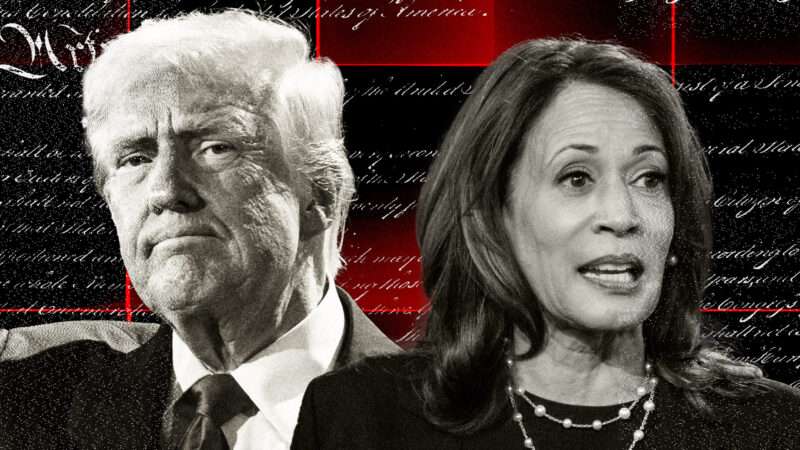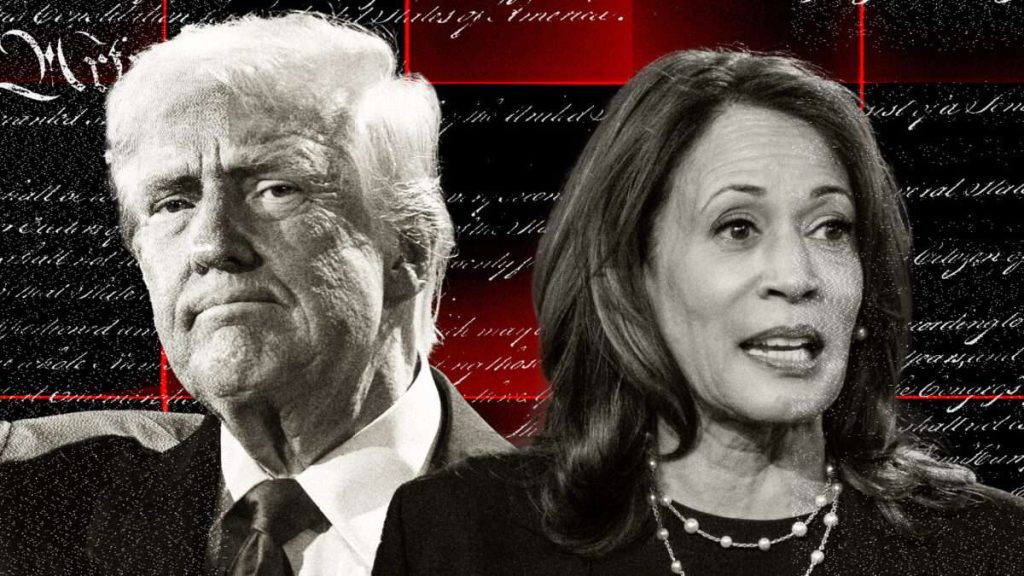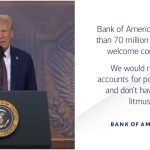
There are three good reasons why Democrats and Republicans alike are using apocalyptic, this-might-be-the-last-election closing arguments in what has been a double-hateworthy 2024 campaign.
First, the hair-on-fire tactic works—at least until it doesn’t. Negative framing is naturally stickier in our brains.
Second, it’s plausible. Voters are in a persistently glum mood about today’s economy (46 percent rate it as “poor,” per Gallup), tomorrow’s (62 percent say “worse”), and the overall direction of the country (72 percent negative). Many have the understandable suspicion that the biggest public policy decisions—and disasters thereof—are happening regardless of their input.
Finally, it’s that age-old fight-or-flight instinct, with the squirrel-in-the-headlights terror of the looming unknown. We fear most what we hear coming but cannot quite see. And all expressed political certitudes notwithstanding, we just cannot know how bad Kamala Harris and Donald Trump will be.
This is an unhelpful state of affairs when pondering who should wield executive control over a $6.8 trillion (and fast-growing) Leviathan with more than 4 million employees, an 89,000-page Federal Register of regulations, a law enforcement division bigger than most countries’ standing armies, and the most lethal military in history.
The next president will face life-and-death decisions about the hot wars in Ukraine and Israel, cope with the ugly realities of debt service exceeding already sky-high military spending, continue to drain the Social Security trust fund to within months of triggering a mandatory 20 percent benefits cut for 70 million Americans, and use the presidency’s broad authority to reshape both immigration policy and the global tariff system. All in addition to responding to Black Swan challenges we currently cannot foresee, at home and abroad. What will they do, and what effects will those exertions have? Who knows!
From the Harris perspective, such policy ambiguity is by design. Axios reported over the weekend that the vice president and her campaign staff “have refused to detail her position on more than a dozen of her previous stances the past three months in response to questions by Axios. The response to those inquiries: No comment.”
These are not just the usual politically symbolic or impossibly grandiose promises of a presidential campaign, either, but entire actionable categories of keen voter interest, such as immigration. “Harris pledged in 2019 to take four executive actions as president that would give 2 million Dreamers a path to citizenship and shield more than 6 million undocumented immigrants from deportation,” Axios noted. So how about 2024? “As president, she’ll continue to protect Dreamers while also pushing the bipartisan border deal that will dramatically strengthen border security,” was all the campaign could offer.
Harris made herself less available to the press in the 2024 homestretch than even geriatric Joe Biden during the COVID year of 2020. Her few interviews with journalists have been poor and full of self-contradictions. Even on what are traditionally Democratic issues, such as education, Harris has been “light on details,” focusing instead on what a monster Trump 2.0 would be. “Kamala Harris’ most consistent political trait,” longtime Harris observer Elizabeth Nolan Brown observed in the November issue of Reason, “may be a lack of consistency.”
On Israel, Harris before entering the presidential campaign was arguably the biggest White House critic of how Prime Minister Benjamin Netanyahu has conducted the war against Hamas; now, she declares there’s no daylight between herself and Joe Biden. The rest of her foreign policy looks like a continuation of Bidenism, which would mean rhetorical fealty to the frayed institutions of the post–World War II era, and little to nothing in the way of fresh thinking (including about the fact that American public opinion has soured on Washington’s leading role in world affairs).
On the domestic front, many of Harris’ worst ideas, such as price controls, would, as The Volokh Conspiracy‘s Ilya Somin has noted, “require new legislation that will be hard to get through a closely divided Congress, especially since Republicans are highly likely to regain control of the Senate.” One of her few unambiguously better-than-Trump policies, repealing federal marijuana prohibition, seems more legislatively plausible.
Still, she’s mostly a continuity candidate, someone whose cipher-like persona seems designed by a laboratory to let imperial Washington—its growth, its bureaucracies, its Pax Americana—run on autopilot. If you like your Biden administration, you can keep your Biden administration. More to the point of voter motivation, she, like her boss, is an instrument for thwarting Trump.
So what would Trump do? It’s not just a game, much as political combatants seem to still enjoy (or at least lack the dexterity to sidestep) the tedious round-and-round of the GOP candidate saying something that would have appalled pre-2015 political audiences, then the media and his opponents wrestling it out of context and extrapolating fascism, then the centrist literalists stepping in, and the anti-anti-Trump brigades manning the barricades, and then oh did you hear what he said today?
There’s an argument that having to constantly calculate the probabilities between taking an erratic executive literally and seriously is itself a kind of civic tax. To pull two examples from 2015–2017 at semi-random, no, President Trump did not deport the U.S. citizen children of illegal immigrants, as he had serially threatened on the campaign trail. But also, yes, he did almost immediately act on his “Muslim ban” trial balloon by suddenly suspending entry of all legal refugees into the country, as well as citizens of seven predominantly Muslim countries, throwing families and airports into chaos.
It can be a challenge to cut through the clutter of political conversation to rationally assess how a second Trump administration would exercise power. Reason‘s Jacob Sullum has done his level best, concluding that “things are different now in several important ways,” including:
First, Trump has accumulated more grievances against the political opponents he blames for persecuting him. He has repeatedly threatened to punish those “enemies from within” if he regains power, whether through criminal investigations, revocation of broadcast licenses, or other routes of retribution.
Second, the U.S. Supreme Court has endorsed a broad version of presidential immunity from criminal liability for “official acts.” That license explicitly encompasses a president’s communications with the Justice Department, one of the chief ways that Trump could make life unpleasant for his critics.
Third, Trump during his first term was restrained by calmer voices that are unlikely to get a place at the table during a second term.
Trump would have wide latitude to shape immigration enforcement as he sees fit, so if you like restrictionism, with all the collateral damage that comes with it, he’s your man. Commanders in chief have even more authority over foreign policy and the use of military force, though as Reason‘s Brian Doherty noted this week, “In general, he kept both the expense and reach of the American empire’s military-industrial complex growing or at least the same.” And presidents also have unique and important pardon power, which means that Trump’s promise to Libertarians to free Silk Road founder Ross Ulbricht is a tantalizing possibility, constrained only by his reliability in keeping promises.
On Trump’s biggest single domestic and foreign policy issue—enacting across-the-board import tariffs, and thus cementing a reversal of seven decades’ worth of poverty-alleviating global reductions in trade barriers—he would have broad authority to make those changes without congressional approval, quite unlike his frequently paired ideas to cut or end federal taxation on all kinds of income (tips, car-loan interest, Social Security benefits, and so on). In other words, his vaunted bridge to the 19th century, where the federal government somehow recreates the high-tariffs, no-federal-taxes funding regime in a world of global supply chains and trillion-dollar governments, would likely fall down on the tax end. The erection of more tariffs, coupled with the lack of across-the-board tax cuts, would make life in these United States considerably more expensive at a time when Americans are howling about the discomfort of inflation.
Prospective presidencies have always been unpredictable, long before our current populist moment. George W. Bush campaigned against nation-building, then embarked on two huge (and largely failed) nation-building efforts in Afghanistan and Iraq. Barack Obama mocked Mitt Romney for obsessing about Vladimir Putin just two years before the Russian president upended the global order by annexing Crimea. Bill Clinton surely did not initially campaign for president on ending big government as we know it.
But the two major party candidates America are considering today are shrouded in more combined mystery than any presidential choice of my lifetime. We know it really matters, most of us have a clear and vehement preference, yet we just don’t know what the next presidency will look like. It’s turtles all the way down. Or maybe squirrels.
The post The Alarmingly High, Frustratingly Unknown Stakes of Election 2024 appeared first on Reason.com.






